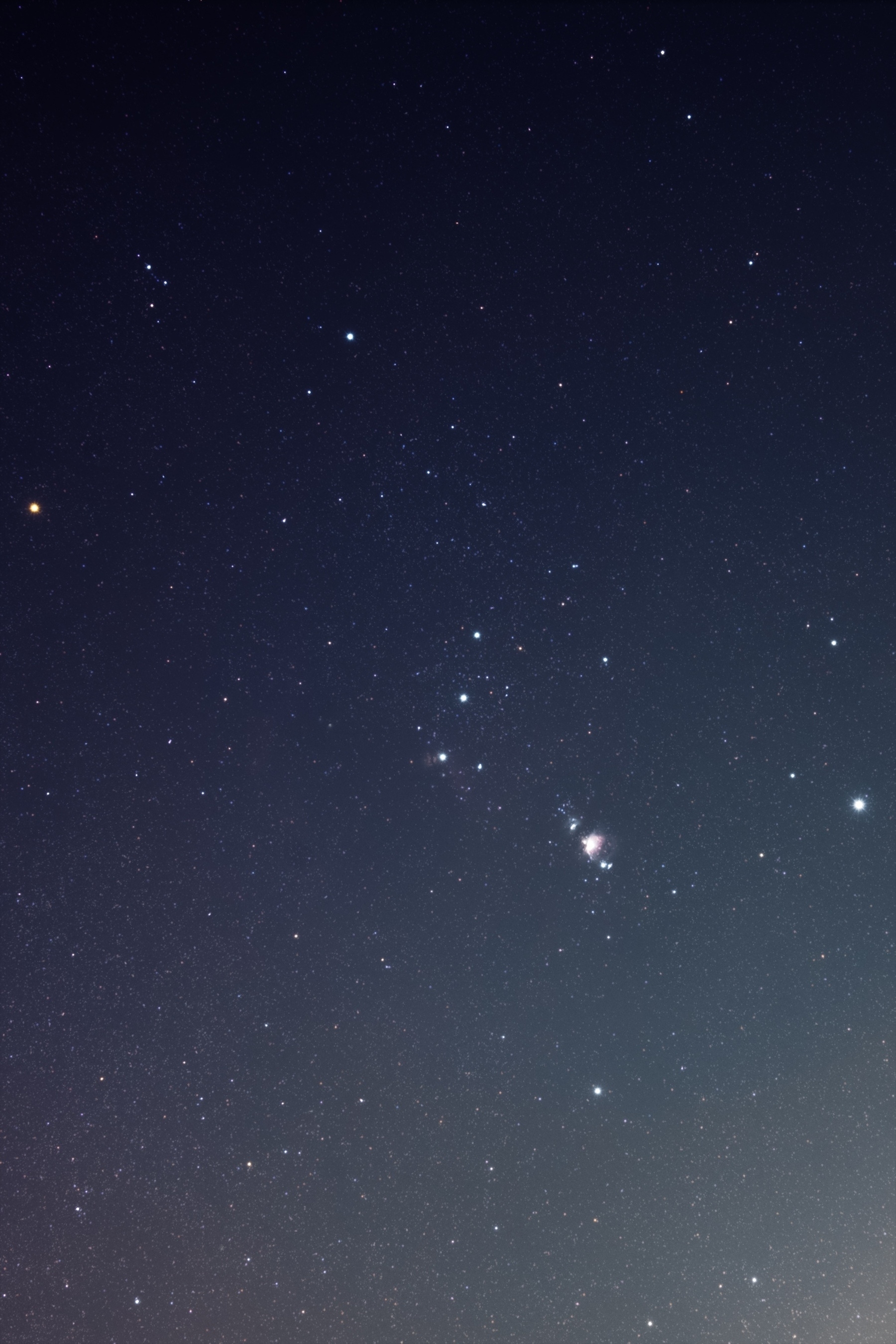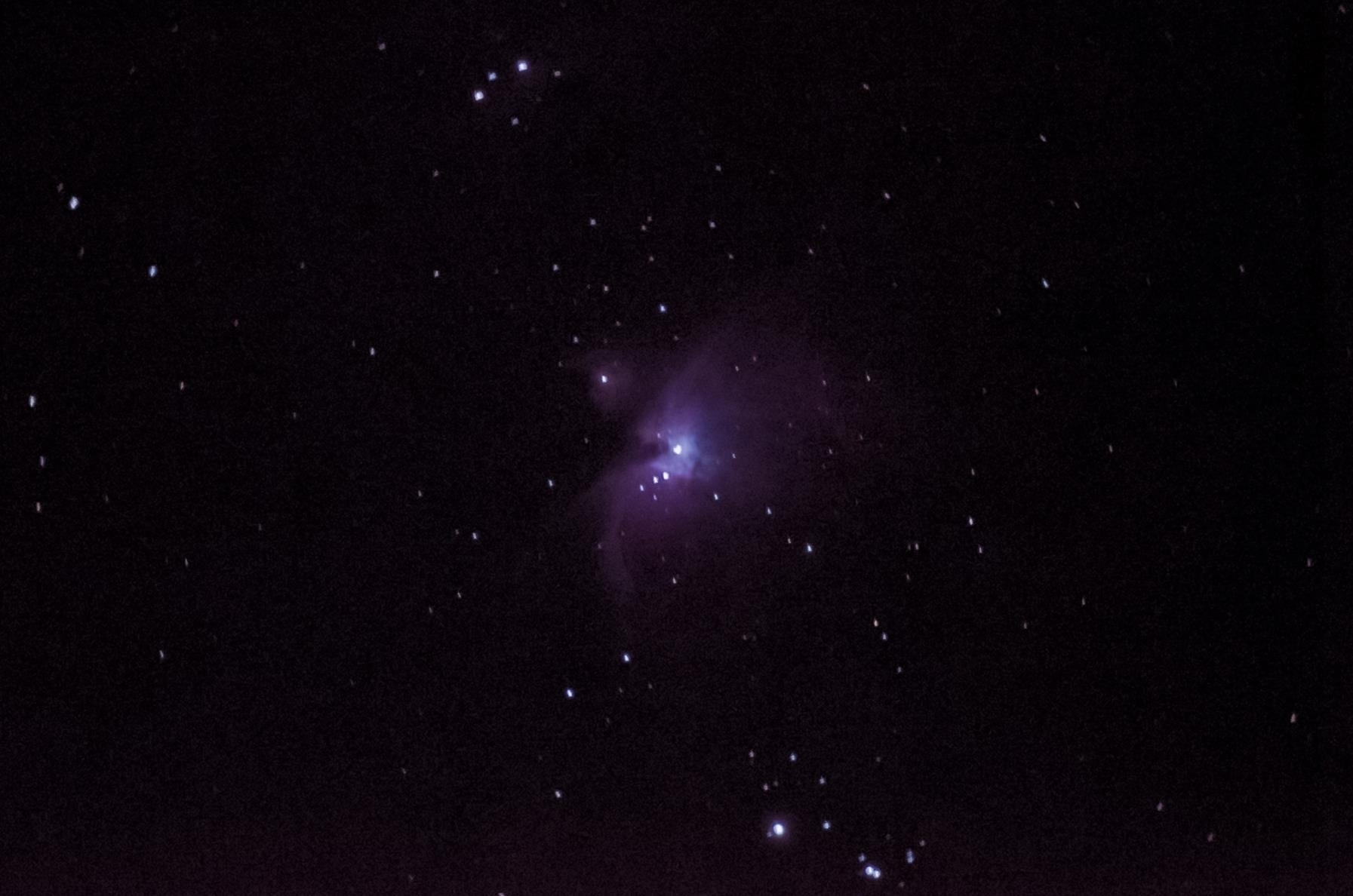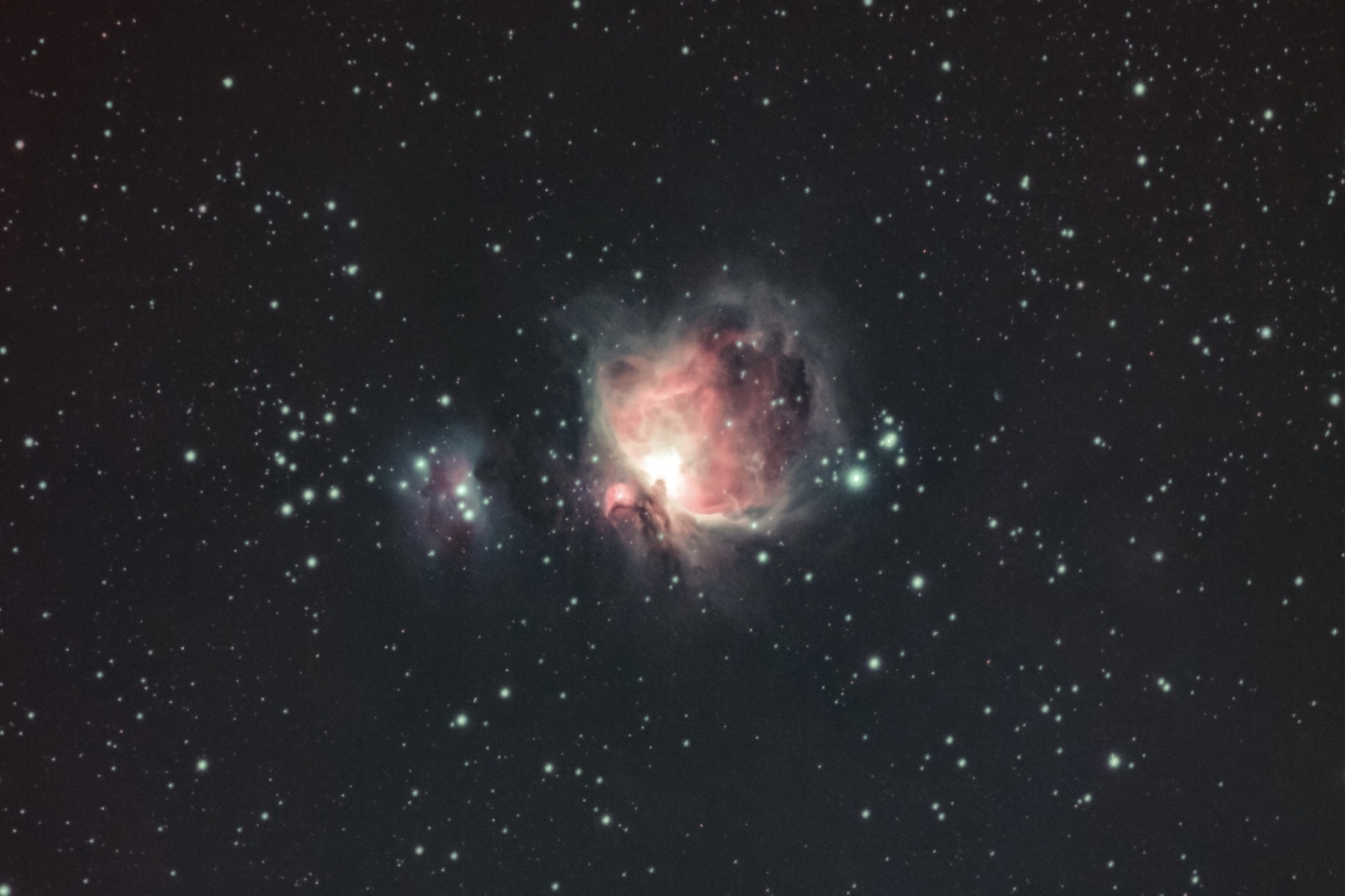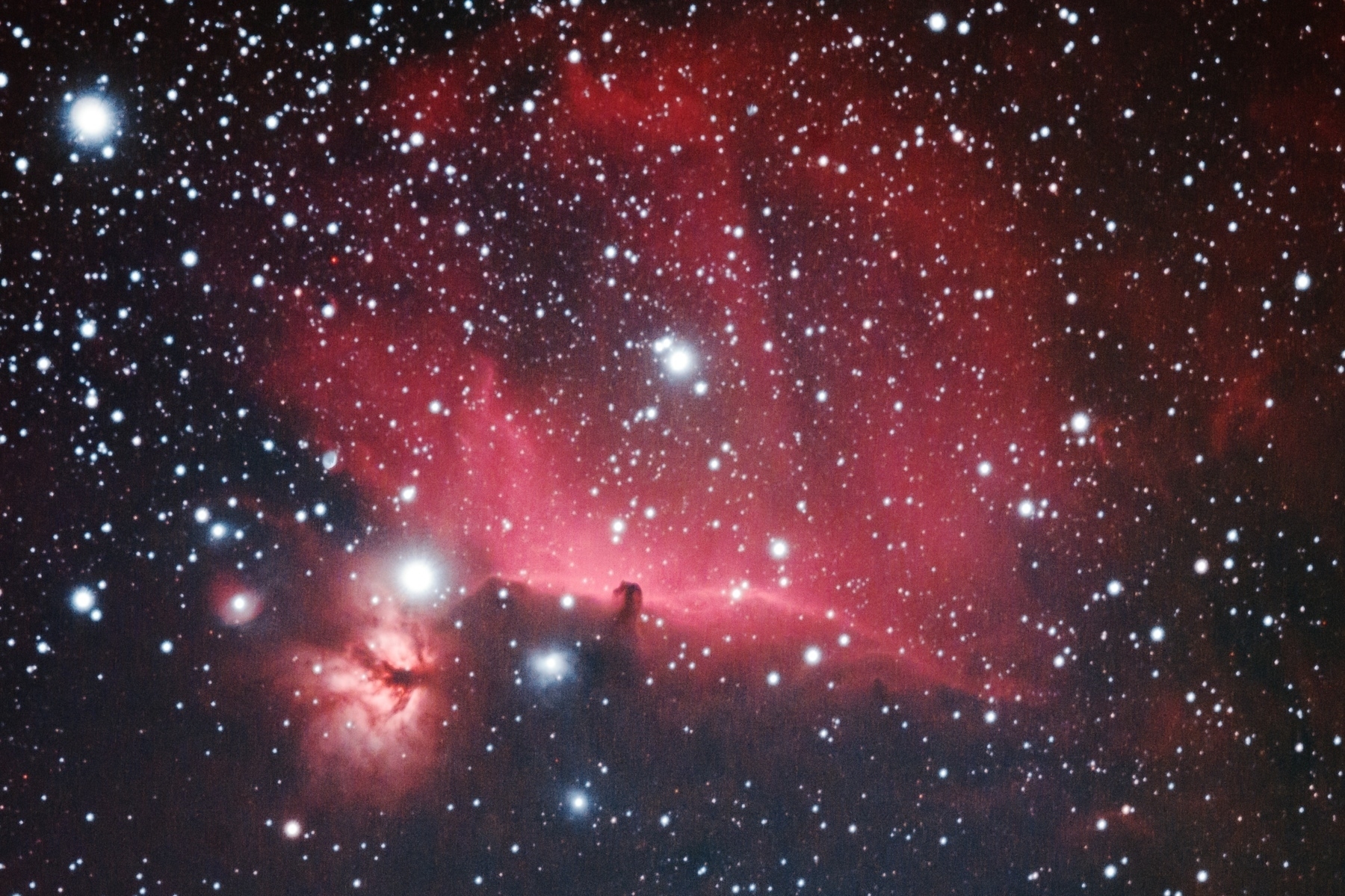Orion
2024 version of the Running Man (NGC1977) and Orion Nebula (M42). This star forming region in the sword of Orion is about 1350 light years away. The core was intentionally overexposed to bring out the dark nebulosity.
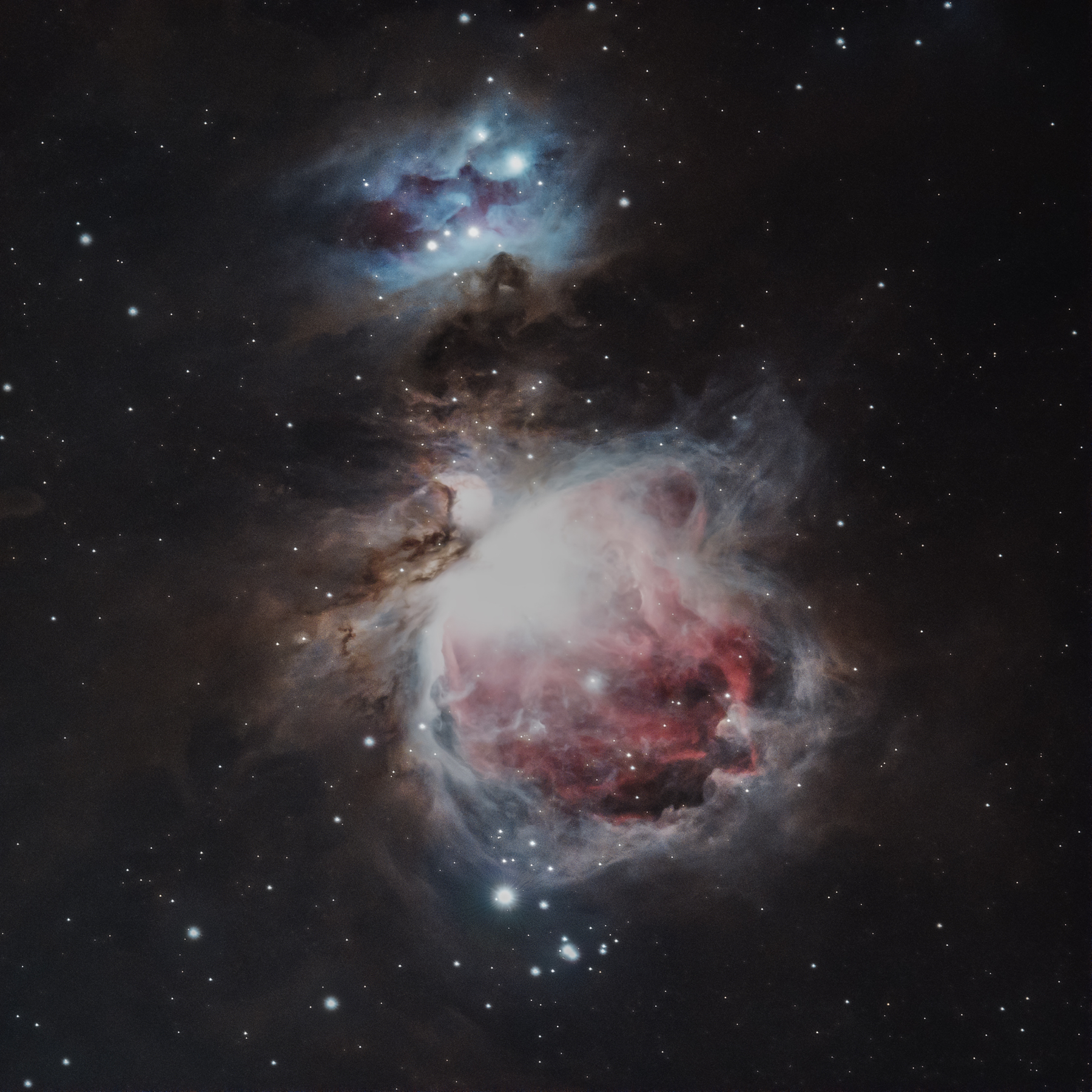
This image is a stack of sixty 1-minute exposures taken with WO Zenithstar61 telescope attached to ASI533-MC-Pro camera. Processed using SIRIL and Photoshop.
The Horsehead and Flame nebulae from Orion. The bright star (Alnitak) between them is the leftmost star in the belt of Orion. Can’t take enough photos of this view.
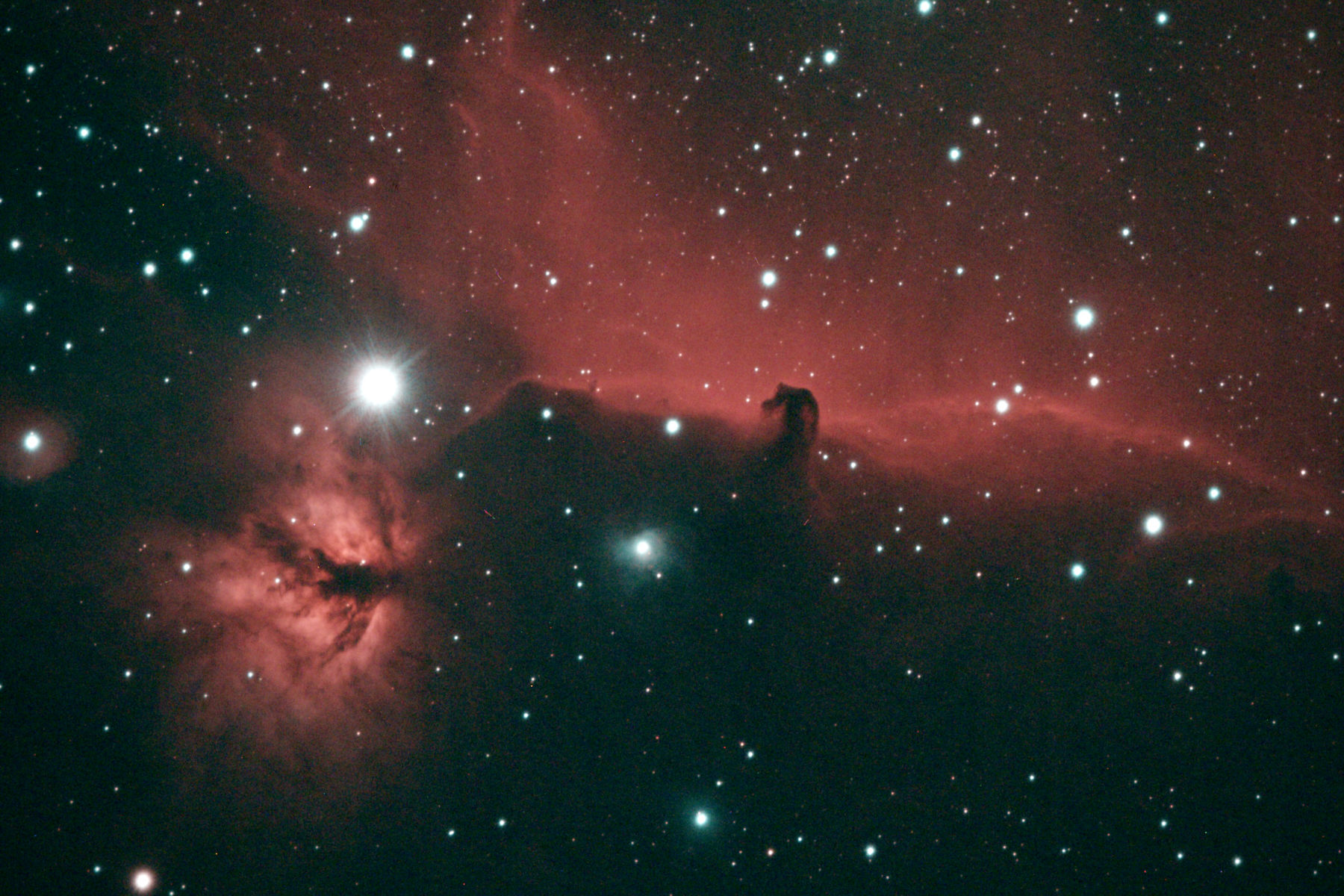
Running man and Orion nebulae
This must be my best effort at capturing the running man and Orion nebulae so far. This nebula is a region of massive star formation and is closest of such kind to Earth at ~1300 light years.
Taken with WO ZS61; ZWO ASI533MC-Pro. Only 40 one minute subs without any narrowband filter. Processed with Siril and Photoshop.
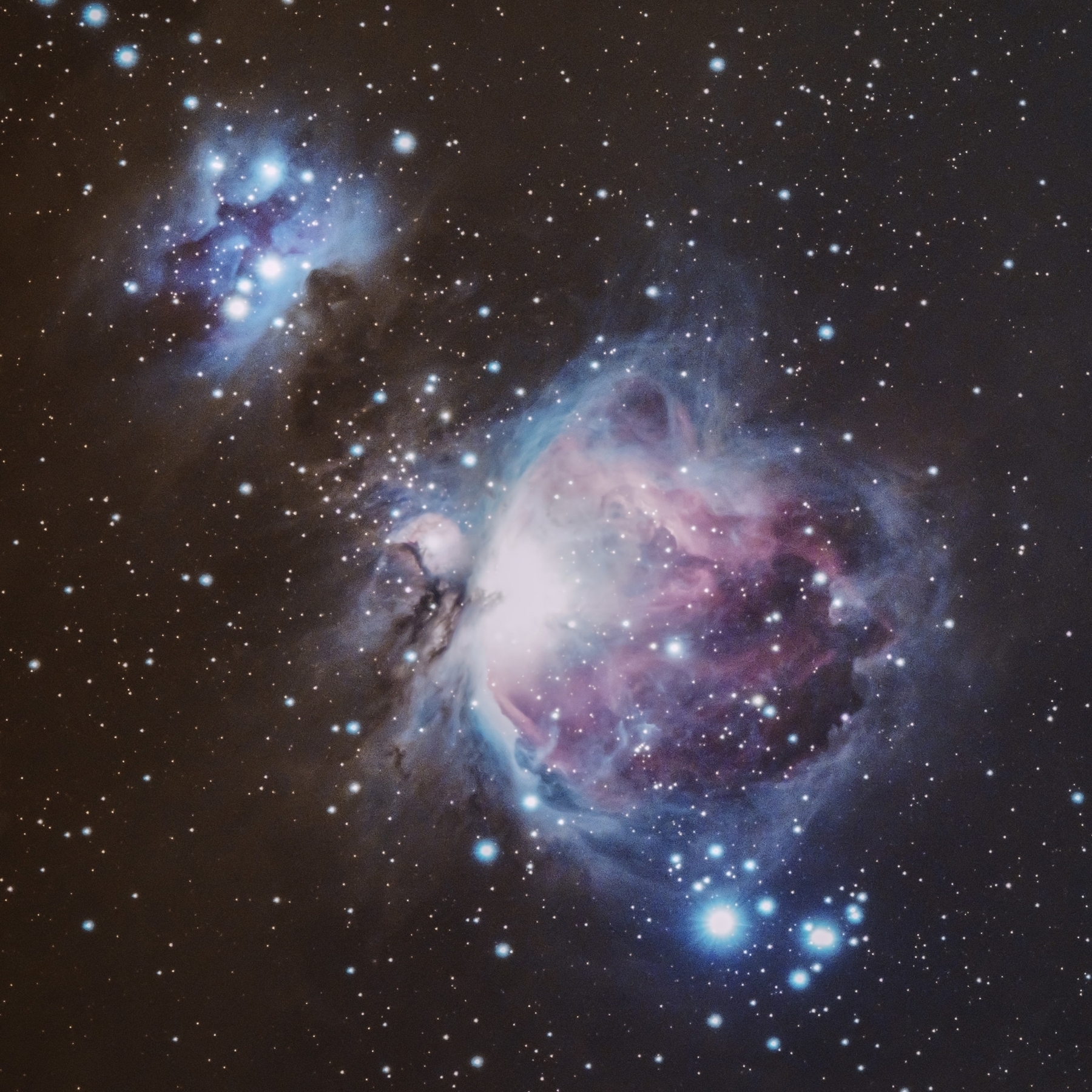
Horsehead nebula
Orion is my most favorite constellation and my most favorite deep-sky object is the Horsehead nebula. It is a dark nebula with background of bright ionized hydrogen gas. With many bright stars especially Alnitak, in the vicinity, it is a challenging object to capture. It is even more beautiful in B&W. It is the same photo described in this post from last month.
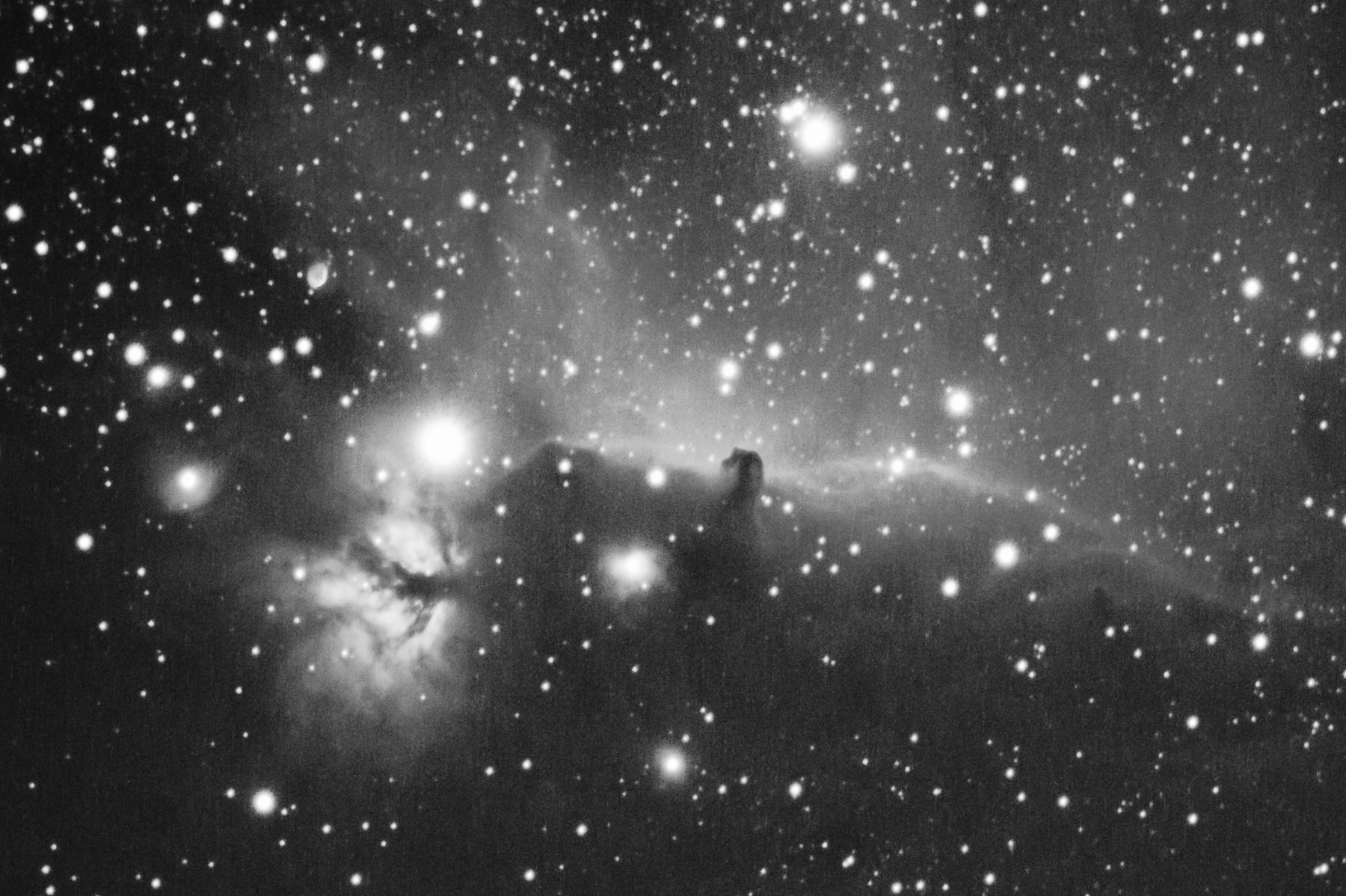
Nebulae in Orion
January has been a very cloudy and rainy/snowy month. On a couple of clear nights, there was a big bright moon making it hard to do any deep sky imaging. Finally, last week, we had a clear dark night. I was able to capture two different images in the Orion constellation.
Orion and Running man nebulae
The Orion Nebula (M42) is one of the brightest nebula that is visible to naked eye. It is about 1300 light years away and is a region of massive star formation closest to Earth. There are about 700 stars in various stages of formation within the nebula. (Text paraphrased from Wikipedia.) William Optics ZS61 with Optolong LeNhance narrowband filter
William Optics ZS61 with Optolong LeNhance narrowband filter
 Nikon-Z6 60 x 1min subs; processed with Siril and Photoshop
Nikon-Z6 60 x 1min subs; processed with Siril and Photoshop
Flame and Horse head nebulae
The Horse head nebula (Barnard 33) is about 1300 light years away and is one of the most recognizable dark sky object. As a young boy interested in Astronomy, I was very impressed by Horse head nebula. It is a faint object and I couldn't view with the amateur telescope that I had. At that time I couldn't have imagined that some day I'll be able to take a photo of Horse head nebula. William Optics ZS61 with Optolong LeNhance narrowband filter
William Optics ZS61 with Optolong LeNhance narrowband filter
 Nikon-Z6 41 x 3min subs; processed with Siril and Photoshop
Nikon-Z6 41 x 3min subs; processed with Siril and Photoshop
While capturing these light frames, other calibration frames (bias, dark, and flat) were also collected but, not used while processing to get the images posted here. Planning to reprocess with those calibration frames and see how much difference they make. I also have to learn techniques for star reduction. As can be seen in these images, the stars are getting bloated while stretching the data to bring out the faint objects.
Orion
I am sure everyone agrees that Orion is the most recognizable and the most beautiful constellation in the night sky. Along with all the bright stars, there are many deep sky objects to explore. I have been waiting for several months to get another chance to image all these interesting objects from Orion. It has been quite cloudy and rainy for many days and nights. There were some clear sky moments between the passing clouds on Friday and I could capture a few subs at 50mm focal length to capture the whole constellation. Not the best photo but, the Orion Nebula is quite obvious and so are horsehead and flame nebulae. Hope that there will be more clear nights to capture these at higher magnification some time soon.
